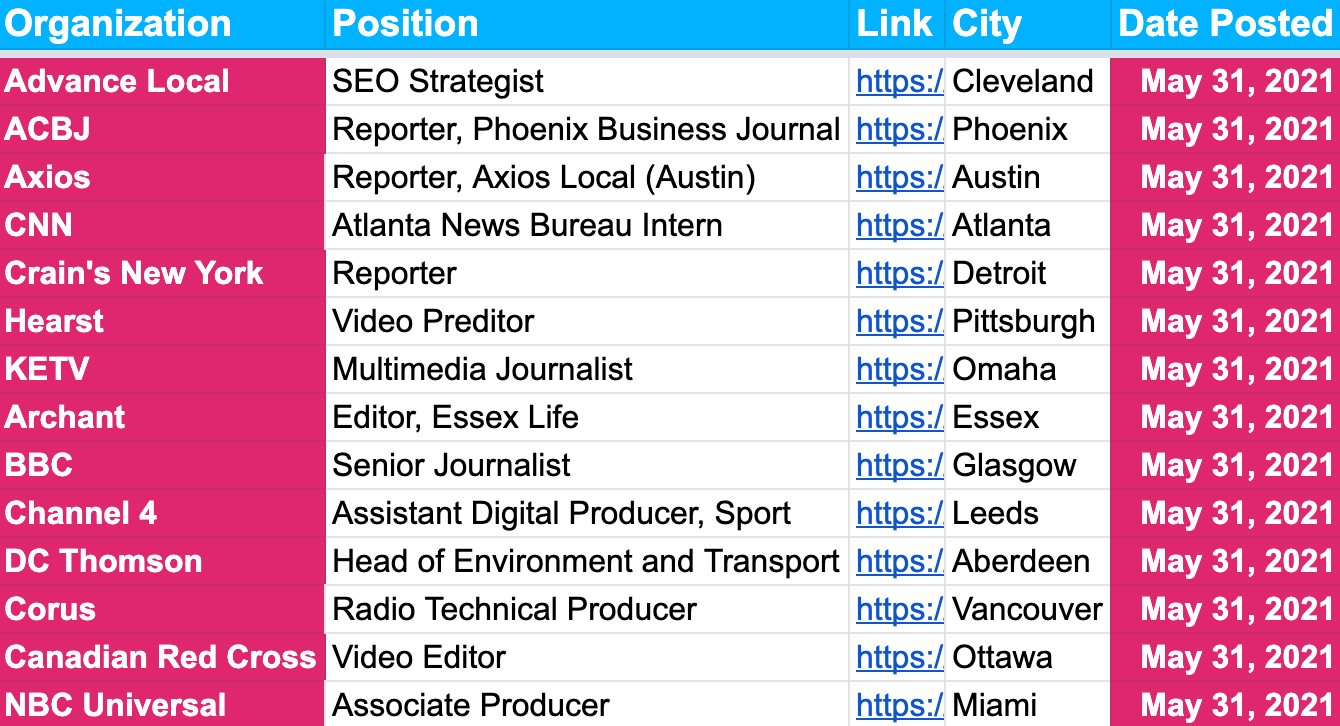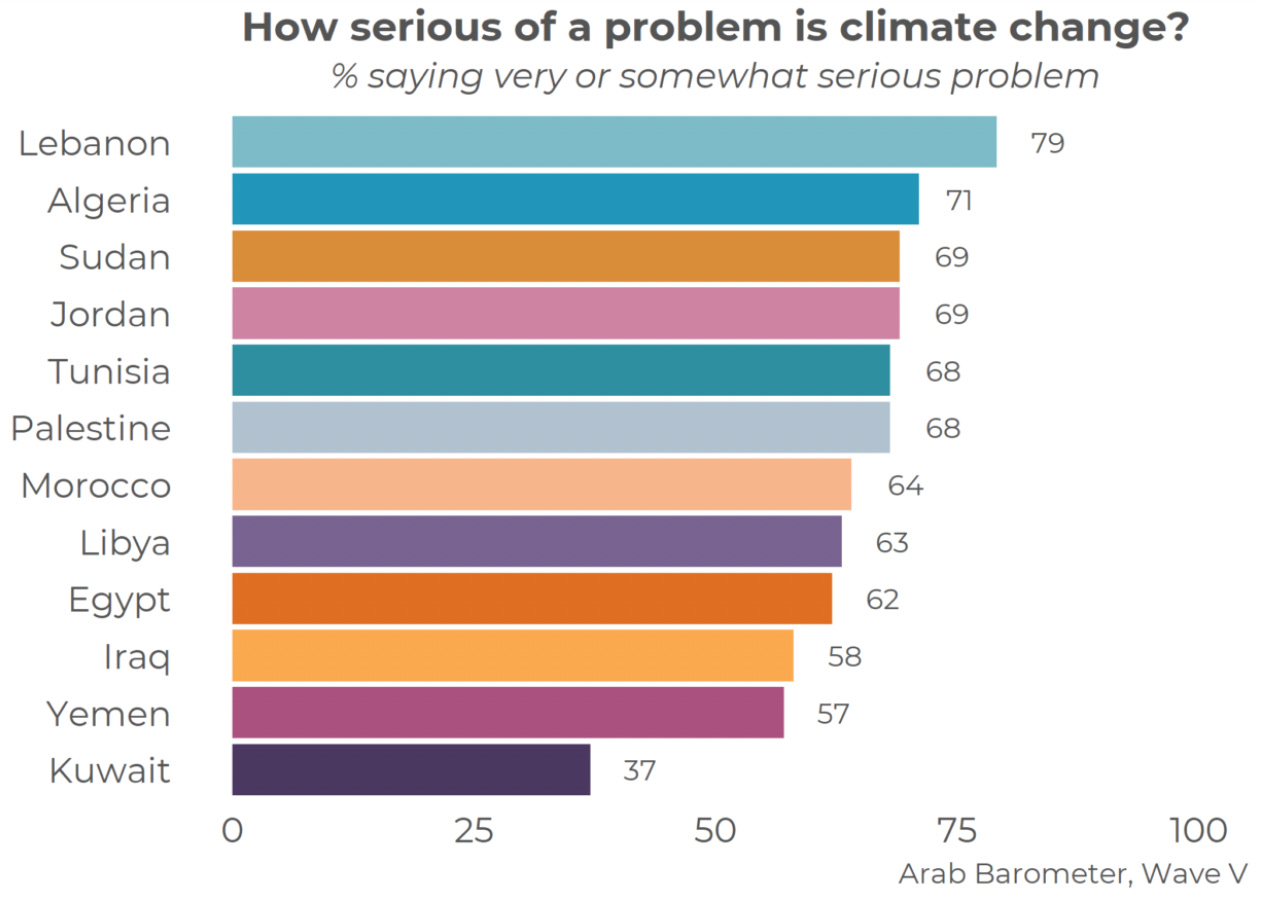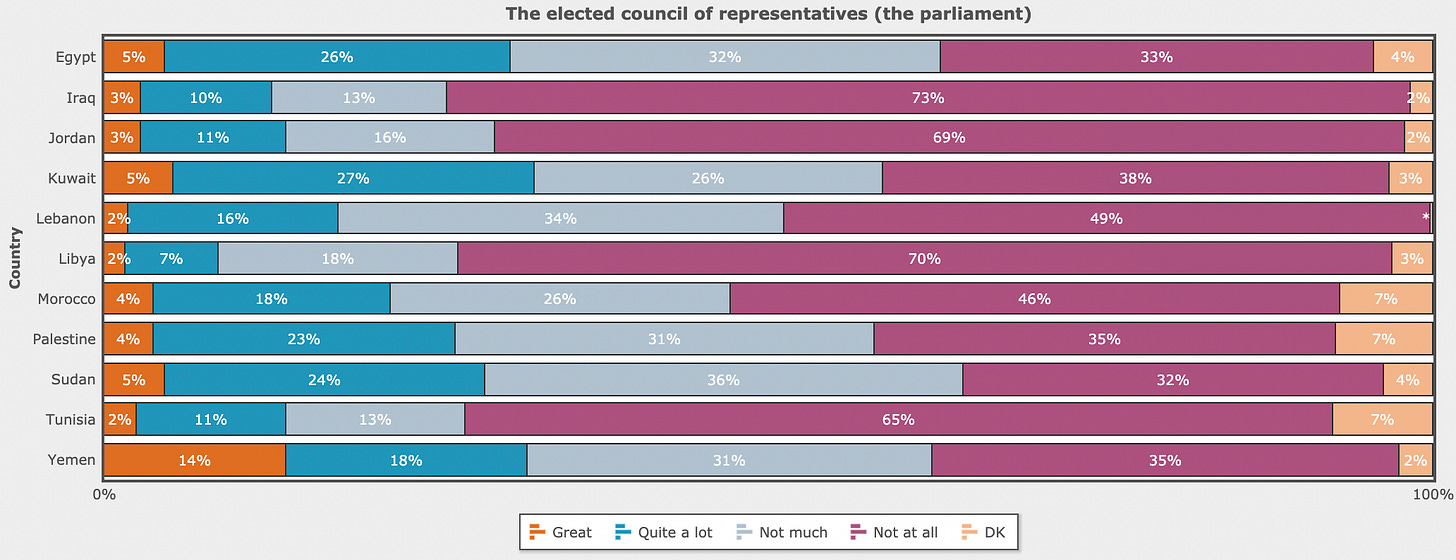🧮 Data Corner: The Middle East
More than 80 datasets on climate change, media freedom and various other issues in the most important political, economic and cultural region in the world.
Hello folks! It’s time for another Data Corner, where we gather a bunch of public datasets and feature the most interesting with cool visualizations.
This month’s edition is dedicated to the Middle East. Too often media in western nations only cover the region when a major event happens. Recently, that’s been the devastating Israel-Palestine conflict and contentious U.S.-Iran nuclear talks. Don’t get us wrong, these are pivotal moments rightly covered in great detail. But important stories need to be told every day.
So that’s our aim with today’s Data Corner and our weekly Inside The Middle East: Shed more light on the world’s most important political, economic and cultural region, and make telling stories more accessible.
With that, we’ve collated more than 80 of the most insightful datasets on the region, with all of them accessible for free below. If you have a dataset to add, reply to this email and we’ll get it on there… 👇
Be sure to check out Daniel’s job board update from Monday where he announced subscription giveaways! And keep an eye out for tomorrow’s Inside The Middle East and Friday’s Picks of the Week. Okay, let’s do this thing! 🌍
Job Corner ✍️
We added another 371 jobs over the weekend. Preview below and subscribe! 🤙
If you’re a paying member, your jobs sheet link will remain the same. Interested in a free week’s trial? Reply to this email and we’ll hook you up!
Rising Emissions
Data from Climate Watch shows the region’s total greenhouse gases have trended upward, despite global action to reduce emissions. Problem is, not all countries in the region signed up to the Paris Climate Agreement, which itself isn’t legally binding and the consequences for not meeting emissions targets are woefully weak. Total GHG only paints part of the picture, however. More people born inevitably means more total emissions. So it would be remiss not to look at GHG per capita, which poses more encouraging signs…
Total greenhouse gases, 1990-2018
The Middle East is home to some of the world’s top oil producers, so it would also be remiss not to mention the impact of oil on emissions. The world’s transition away from non-renewable energy sources has been key to reduced GHG per capita, with the likes of Qatar, Bahrain, Kuwait and Saudi Arabia seeing the largest falls. But as the world’s economies begin to recover from the pandemic, demand for oil is forecast to increase for years to come.
Greenhouse gases per capita, 1990-2018
Public Opinion
The Middle East is no different to any other region in the sense that its countries offer varying opinions of the danger of climate change. Data from Arab Barometer shows the climate is considered a serious problem by most states, but certainly not high enough. Especially as the region’s arid environment makes it one of the most vulnerable to the effects of climate change…
Last Time on Data Corner 🧮
🧮 Data Corner: April: Covid-19's Impact on Schools and Education
🧮 Data Corner: March: One Year of Covid-19
🧮 Data Corner: February
🧮 Data Corner: January
🧮 Data Corner: 2020
Trust in Government
More data from Arab Barometer illustrates the region’s perennial mistrust of heads of state and parliaments. Such high levels of public mistrust in governing institutions cause a plethora of problems, not least an erosion of political participation and democratic development. Unfortunately, the situation hasn’t improved much since the Arab Spring a decade ago.
Libya offers the starkest example of skepticism, but that’s because of the fact that only in the past few months have the people had some form of government to represent them after several years of civil war. Meanwhile in Lebanon, just a fifth of the country have a positive view of the government, which has changed and collapsed frequently in recent years.
Under Attack
Heartbreaking data from the Committee to Protect Journalists shows that almost 600 journalists and media workers have been killed in the region since 2000. While just three have lost their lives so far in 2021, some of the deadliest years have come in the past decade. When it comes to journalists imprisoned for their work, the situation is also bleak. Authoritarian regimes in Turkey, Egypt and Saudi Arabia currently lead the way, and as long as brutal leaders have control, no journalist can feel truly safe.
Media Freedom
We finish with more data on the lack of media freedom, this time from Reporters Without Borders. Zooming out slightly for a global perspective, the Middle East and parts of North Africa are among the most restrictive in the world, rivaling China and North Korea for bottom spot. And an excellent analysis from RSF detailed how Covid-19 has only exacerbated the situation.
In Egypt, for example, the health ministry blocked more than 30 websites on the country’s cases and deaths without a legitimate explanation. And in Syria, a blackout has persisted since the start of the pandemic.
That’s all for today, thank you for making it all the way to the bottom! See you tomorrow for Inside The Middle East!












